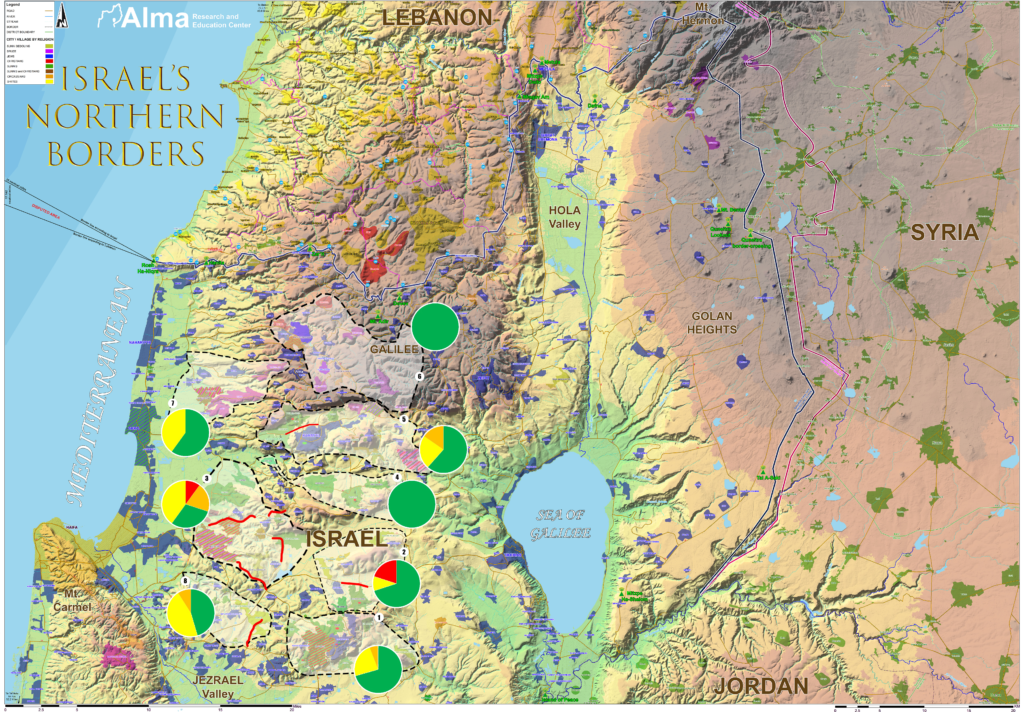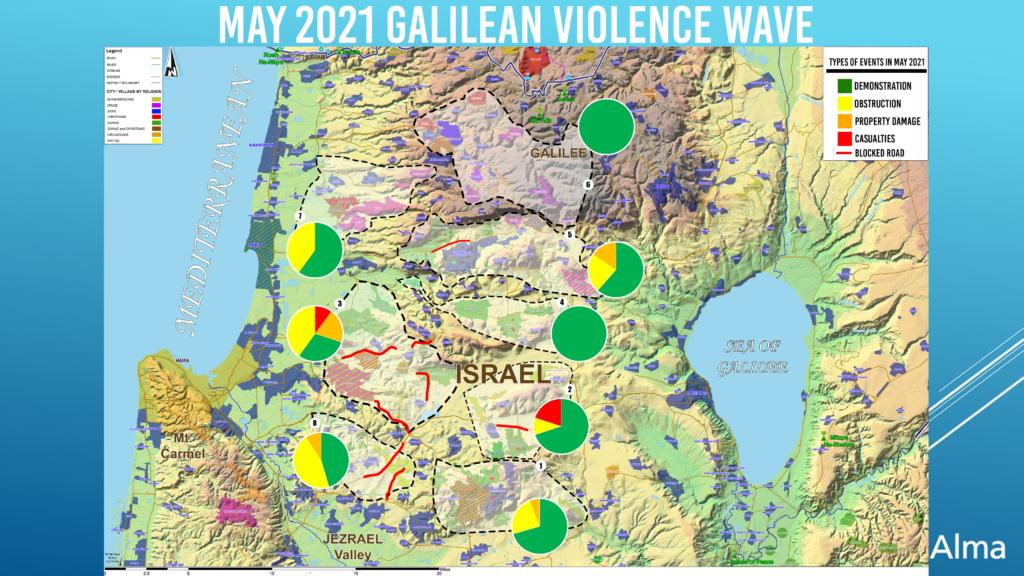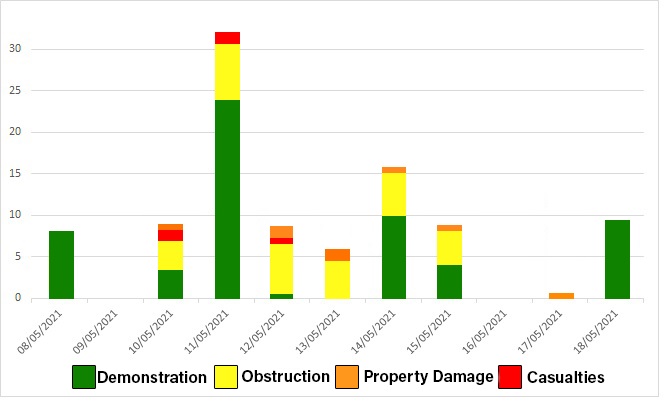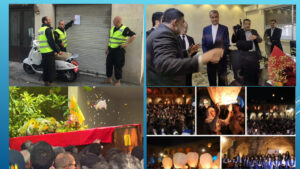The goal of this report is to try to paint an overall broad-brush picture of the points of Arab friction in the Galilee during two weeks in May 2021 (10 – 18) which witnessed an additional wave of violence. The worst since October 2000, and the first for Arab and Jewish GENERATION Z‘s (Zoomers or Gen Zers) otherwise known as the first digital natives. Additionally, the northern events also serve to highlight the potential for improved engagement between the emerging Arab leadership in Israel (lead by the Islamic Raam party) and the Israeli bureaucracy and government. One focused on improving the quality of life for Arab citizens in Israel. An attitude so eloquently put forward by MK Mansour Abbas (leader of the Raam party) as, “Do You want to eat the grapes? or do you want to fight the guard?”.
Practically, the report raises the immediate requirement for the adoption and implementation of an adapted Arab (Private) – Israel Police & Government (Public) Partnership. One based on a growing realization that Arabs, Jews, Druze, and Circassian are destined to live together. Leading to an understanding for a whole of government approach to solve existing long-term economical deficiencies in the Arab society in Israel’s development. One requiring the promotion of Israeli authorities reach out to local Arab leadership, a willingness of Arab leadership to engage and the adoption of a revised concept of police operation. Proactive and preventive in nature, empowering the rule of law and those who support it (the so-called silent majority) while gaining local quick wins (by developing trust and confidence, enabling the levering of local support through sustained community-police engagement). At the center of this approach developing local knowledge as an early warning tool and operational force multiplier.
In this report, friction is defined (based on Oxford/Lexico) as “Conflict or animosity caused by a clash of wills, temperaments or opinions”. The data collated for the report was divided into 4 levels of friction (from low/1 to high/4): peaceful Demonstration (usually with legal license), Obstruction of right of way/route (use of any obstacle – rocks, burning tires or road construction debris & highway lighting), Property damage (referring mainly to stone-throwing damage to vehicles)[1], Casualty (wounded or fatalities). The general term Arab includes Arab citizens of Israel that are Arab Moslem (including Bedu) and Christians. Druze and Circassians are mentioned separately. The spatial scope of the paper is the rural upper and lower Galilee countryside, bureaucratically framed as the Israel northern district and does not include analysis of the mixed (diversified) urban city of Acre (a unique locale requiring specific data collection and understanding).
The open-source data was collected from social media in Arabic, Hebrew, and English, broadcasted and print editions and personal information from the field. Over 100 events were catalogued and organized in an excel spread sheet – clearly, this is not a definitive collection of all events. Some were never reported, some reports lost, and some are only in the purview of the Israeli security forces or knowledgeable to the perpetrators themselves.
Based on the available data collected for the events in the Galilee, it appears that the total number of Arab violent perpetrators was in the hundreds (tens in each violent flash point). The majority being young people (late teens to early twenties – collectively termed as, Gen Zer’s) who acted locally (close to home) and out of opportunity (living close to main routes, the existence of an Israel Police installation in the town which they attacked or the direction of the wind in the case of arsonist attempts). Perpetrator motivations appears varied, personal and compounded including; Islamic – the events in Jerusalem (Temple mount – al-Aqsa) appear to be a common catalyst, although it’s not clear if it was a sustaining meme, personal frustration especially due to COVID19 economical and emotional impact and the simple boredom it produced serving only to exacerbate an already tense situation. There appears Arab political elite in Israel “tail wind” influence on the violent activity (which where it occurred, tended to follow organized demonstrations by the Arab political elite) and limited indication of external influence (if any, it appears more pan Arab than Palestinian)[2]. No Jewish violence against Arabs in the Galilee was noted.
Brigadier General (IDF Reserves) Erez David Maisel has vast experience in intelligence research and collection, strategic planning, international relations, and Defense diplomacy. A hands-on practitioner in international negotiations, conflict prevention, and boundary management he is co-founder of the Technion Institute in Haifa’s research center BRDG (Boundary Research and Deconfliction Group) and an associate researcher for the IDF’s history department focusing on cross-boundary engagement as a stabilizing tool. Born in South Africa, served in Israel’s embassy in the USA – Washington DC as a defense attaché and a native of northern Israel. He tweets at @ErezMaisel








